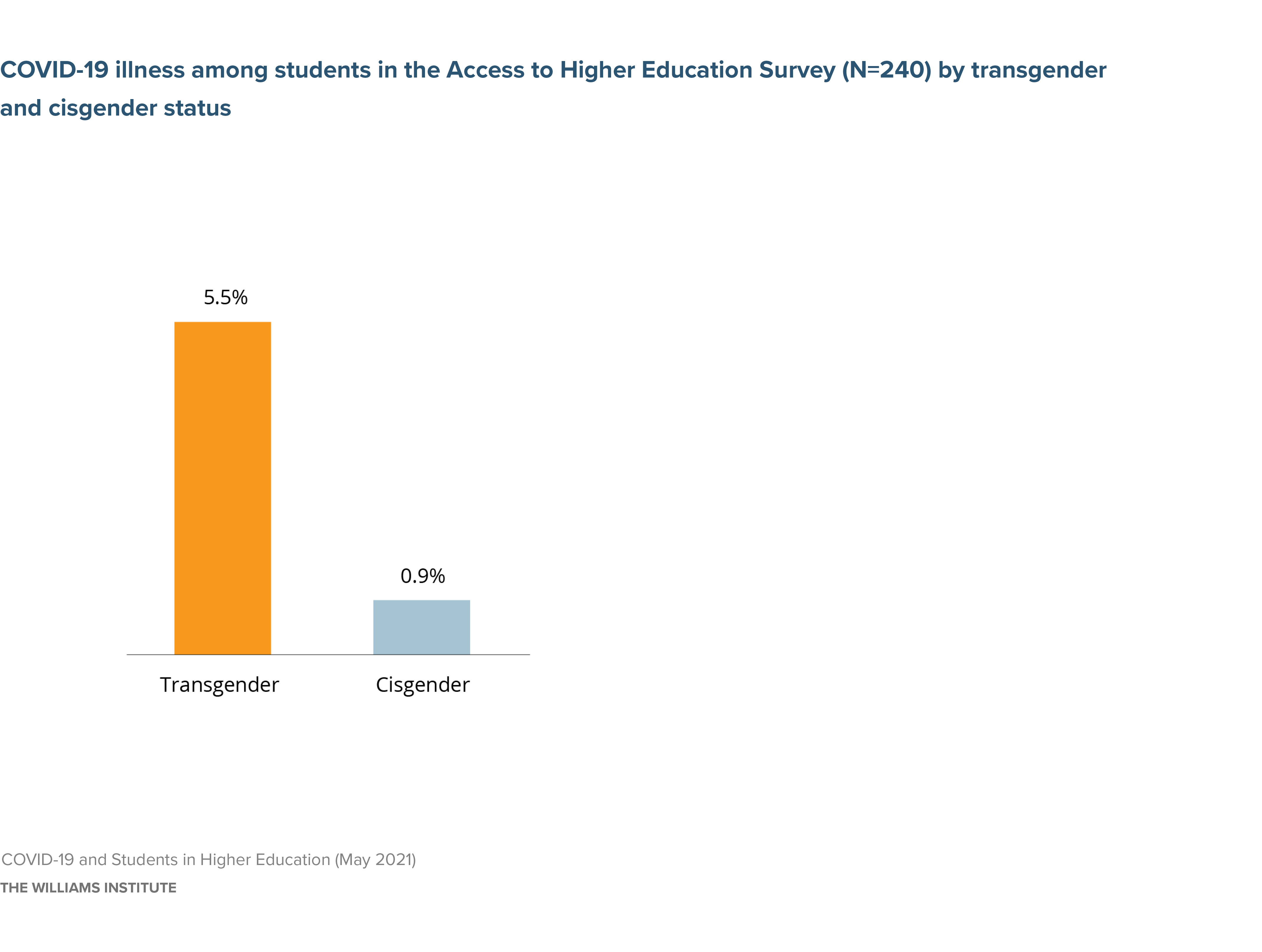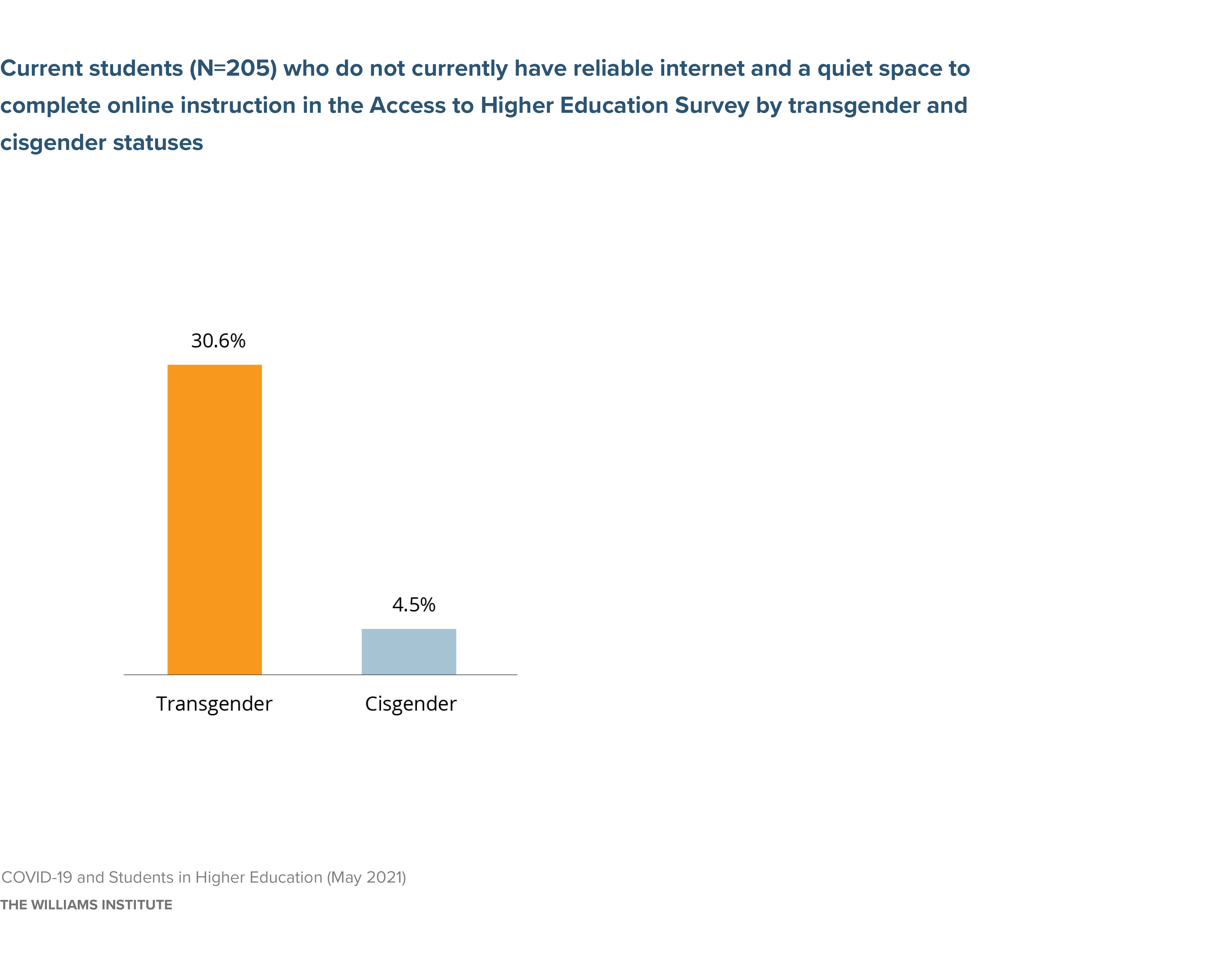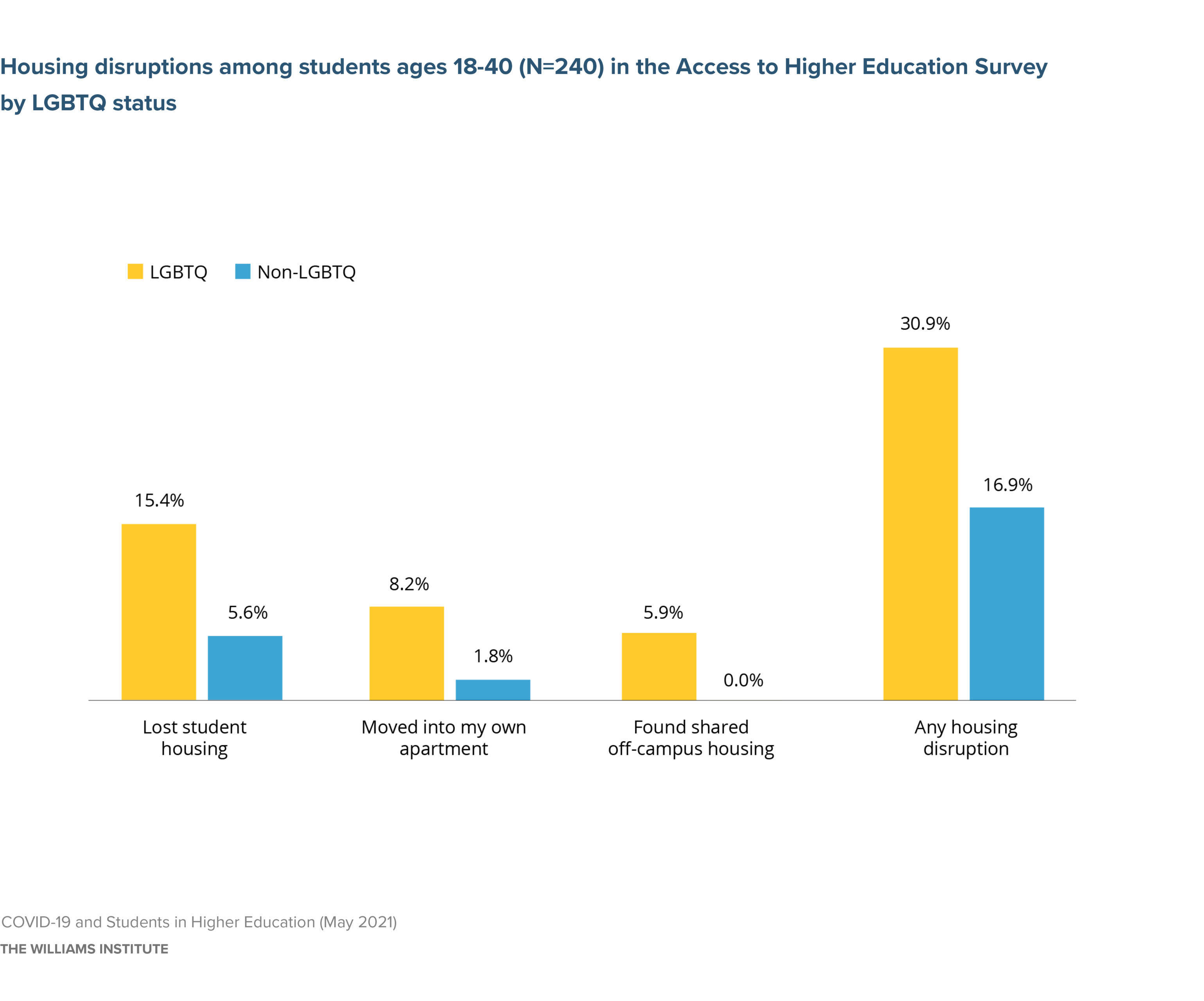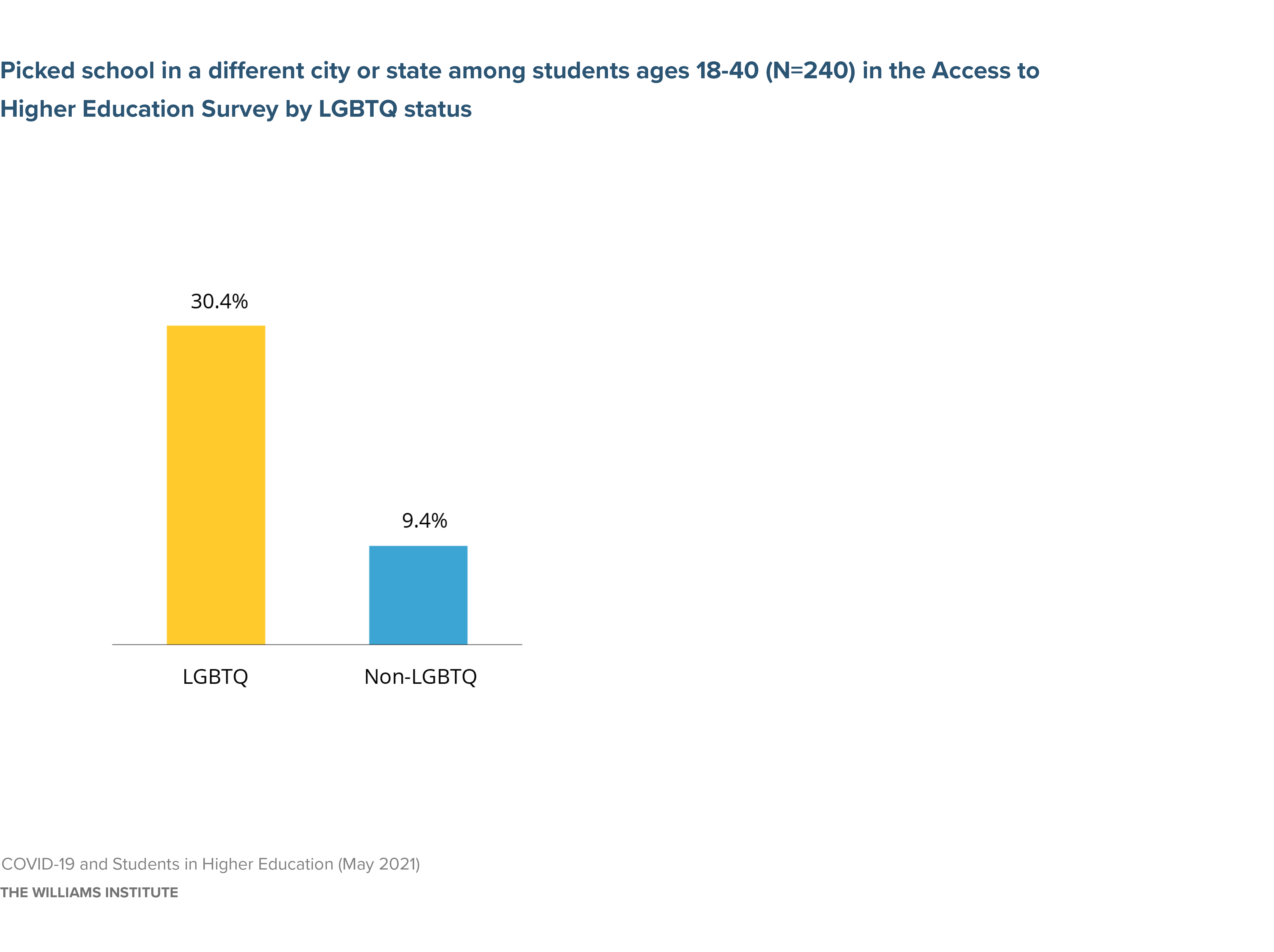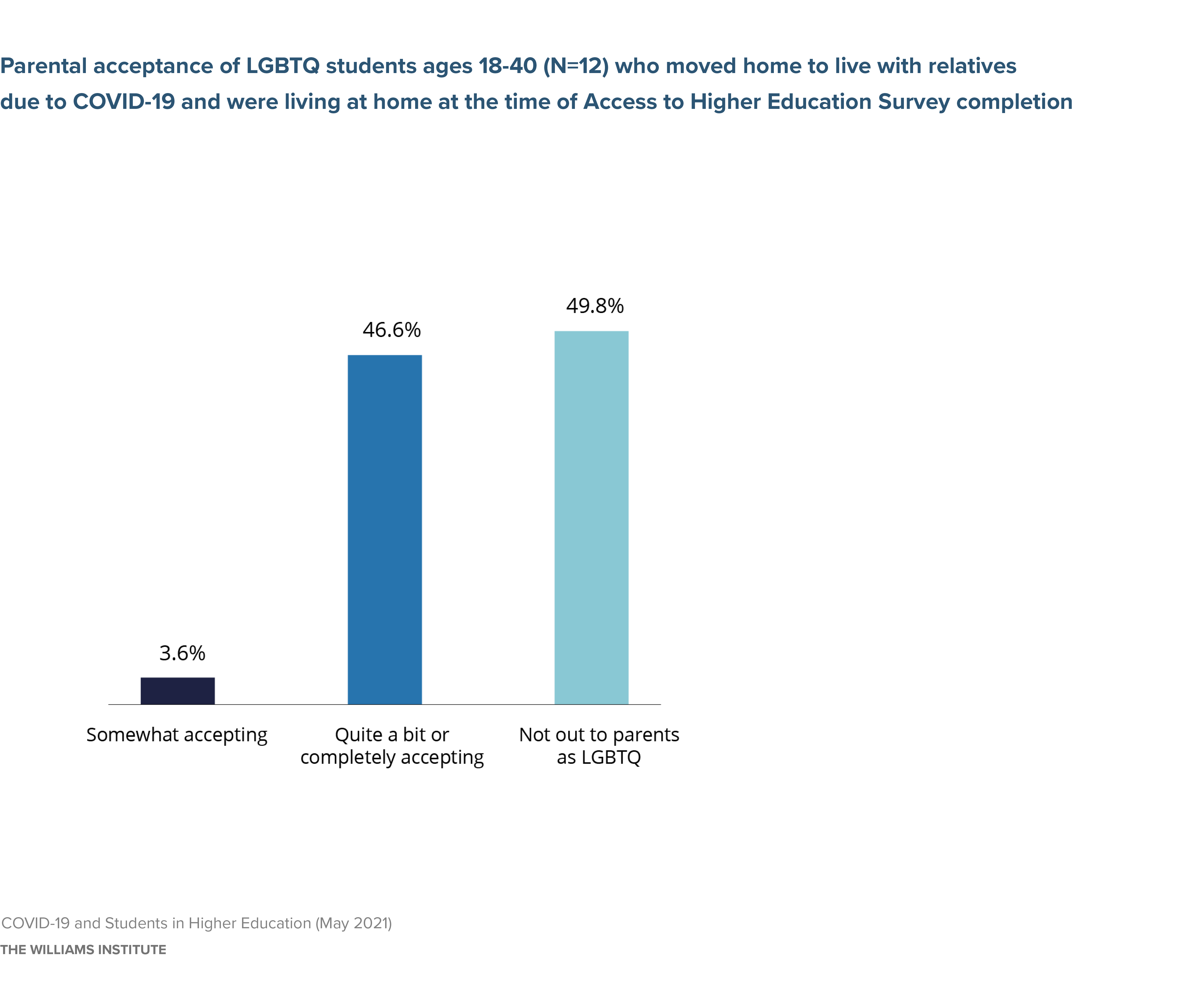Executive Summary
Prior research conducted by the Williams Institute and others indicates that LGBTQ people face greater risk of COVID-19 illness and other consequences due to underlying health and economic vulnerabilities. Most research conducted on the pandemic to date has focused on adults in the general population, despite the potential long-term economic effects of the pandemic on students. Particularly vulnerable are the nation’s 3.4 million LGBTQ students ages 18-40, including 2.5 million ages 18-24, who may find themselves “sheltering in place” with families that are not supportive of their sexual orientation and gender identity. This study uses a nationally representative sample of U.S. adults ages 18 to 40 conducted in January and February 2021 to examine the experiences of LGBTQ people and their non- LGBTQ counterparts who were students or planned to be students during the COVID-19 pandemic.
Almost a third (31.5%) of 1,079 participants in the Access to Higher Education Survey, including 36.6% of LGBTQ and 25.7% of non-LGBTQ participants, reported that they were students or planned to be students during the COVID-19 pandemic. Some (16.9%) of these participants indicated that they postponed starting school because of coronavirus (COVID-19). However, given that most of the sample included in this report (N=240) were students during the pandemic, participants will hereafter be referred to as students. Students completed questions about COVID-19 illness, remote learning, and the impact of the pandemic on their educational pursuits, housing, and educational financing. Differences between LGBTQ and non-LGBTQ students were examined for the sample as a whole and by transgender/cisgender status, race/ethnicity, and first-generation college status where possible.
Main Findings
COVID-19 Illness among Students and their Families
- About 1.3% of LGBTQ and non-LGBTQ students were seriously ill or hospitalized with COVID-19.
- Transgender students were six times more likely to report having been seriously ill or hospitalized with COVID-19 than their cisgender peers, 5.5% versus 0.9%, respectively.
- About one in five (20.2%) LGBTQ and non-LGBTQ students had a family member become seriously ill or hospitalized with COVID-19.
- Over a quarter (27.7%) of LGBTQ students of color reported that a family member had been seriously ill with COVID, as did 23.1% of non-LGBTQ students of color, 17.4% of White LGBTQ, and 10.0% of White non-LGBTQ students.
Online Instruction and Access to Internet and Quiet
- Over 90% of students reported that their instruction went online during the pandemic.
- Nearly one in ten (9.5%) of LGBTQ and 3.3% of non-LGBT students reported that they did not currently have reliable internet and a quiet space to complete online instruction.
- More transgender students reported a lack of reliable internet and a quiet space to complete online instruction than cisgender students, 30.6% versus 4.5%, respectively.
Ability to Pursue Studies
- Over a third (38.5%) of all students, and nearly two-thirds (65.1%) of transgender students, reported that their ability to pursue their studies was worse than before the pandemic.
- About one in five (22.8%) LGBTQ and non-LGBTQ students experienced course disruptions due to the COVID-19 pandemic, including at least one of the following: taking a leave of absence from school, changing schools, postponing starting school, or reducing number of classes.
- More than one in ten (12.1%) LGBTQ and non-LGBTQ students have had to take care of children or other family members during this pandemic.
Housing Disruptions
- More LGBTQ students experienced a housing disruption due to the pandemic than their non- LGBTQ counterparts, 30.9% v. 16.9%, respectively. More LGBTQ than non-LGBTQ students lost student housing (15.4% vs. 5.6%), moved into their own apartment (8.2% vs. 1.8%), or found shared off-campus housing (5.9% vs. 0%).
- An estimated 3.0% of LGBTQ and 0.8% of non-LGBTQ students had nowhere to live during the pandemic.
Financial Disruptions
One-third (33.0%) of all students experienced a financial disruption, such as loss of financial aid, jobs, internships, or financial support from family, or needing to get a job.
Conclusions
Many LGBTQ and non-LGBTQ students have been impacted by the COVID-19 pandemic. Family illness, a shift to online education, and changes to housing and financial support were reported by over 20% to more than 50% of students. Transgender students were especially impacted by the pandemic. They were more likely to report having been seriously ill with COVID-19 than their cisgender counterparts. Transgender students were also more likely to report that they lacked reliable internet and a quiet space to complete online instruction than their cisgender peers. Nearly two-thirds of transgender students reported that their ability to pursue their studies had worsened due to the pandemic.
LGBTQ students were more likely to experience housing disruptions than non-LGBTQ students, in part because they were less likely to be living with family before the pandemic. Almost a third of LGBTQ students reported seeking schools in cities and states away from where they grew up, and, among those who moved home to live with relatives due to COVID-19, half were not “out” to parents as LGBTQ. While parents can be a source of housing stability, living with parents may also be challenging for LGBTQ students whose parents are not accepting of them as LGBTQ people or to whom they are not “out.” In preparing for future pandemics or other emergencies, colleges and universities should consider LGBTQ students, as well as other vulnerable student populations, whose reliance upon campus housing, internet and other services cannot be absorbed by families of origin.
Download the full report
